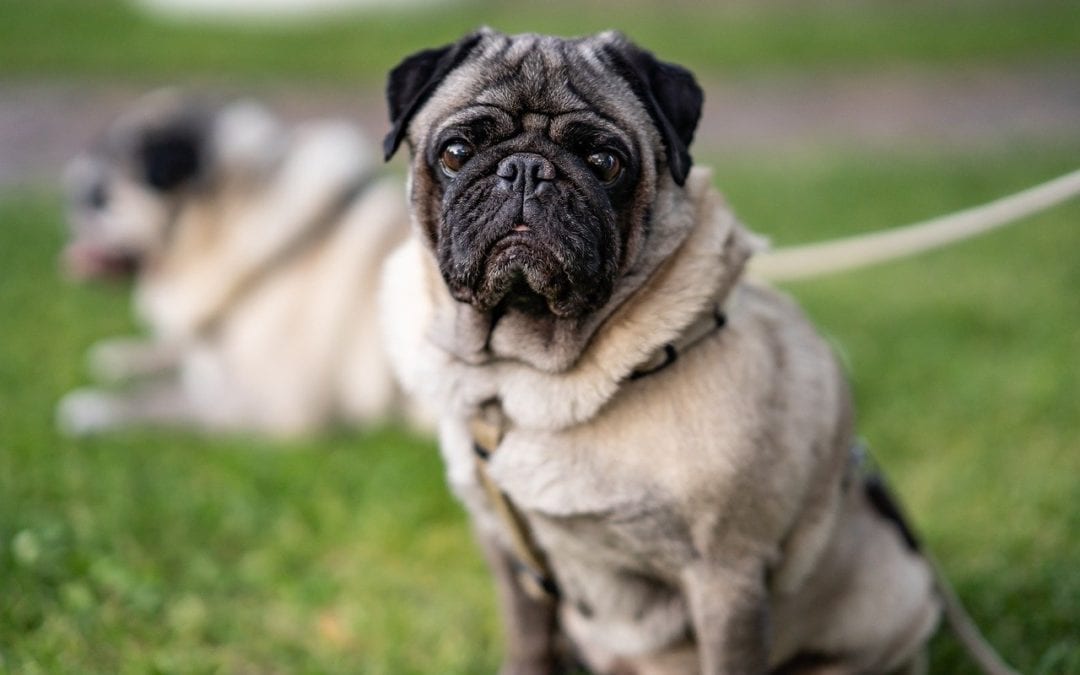Someone once said, “not a single Pug will die without pigment on his cornea”. The cornea, mind you, is the clear external “windshield” of the eye. Much like having mud on a windshield, pigmentation on a cornea can cause substantial vision issues. Terms that have been used to describe the progressive corneal pigmentation that happens in pugs (and some other breeds) include pigmentary keratitis, pigmentary keratopathy, and corneal melanosis.
So why does corneal pigmentation occur?
Corneal pigmentation occurs as a biological response to inflammatory stimuli, like aberrant hairs, poor eyelid closure, tear deficiencies, and immune-mediated diseases. Less frequently, pigmentation may occur following corneal trauma.
Are there other risk factors for corneal pigmentation in Pugs?
There seems to be a correlation between the presence/severity of corneal pigmentation and fawn coloration, ocular discharge, tear production or quality, and low corneal sensitivity.
But what if my Pug doesn’t have any corneal pigmentation?
You may want to a look a little closer. A study of nearly 300 pugs found that 88% of AKC-registered and 79% of non-AKC-registered pugs over 16 weeks of age had corneal pigmentation. That’s a HUGE proportion, and most pugs would probably benefit from a comprehensive eye examination.
What should I do if I suspect my Pug has corneal pigmentation?
The first step is to get a comprehensive ophthalmic examination performed. This would include investigation for all of the underlying issues that could cause or perpetuate the pigmentation.
Are there medical treatments available for corneal pigmentation?
Absolutely! As with many diseases, early recognition and treatment is key to successful management. Topical immunomodulatory medications (cyclosporine, tacrolimus) are commonly used as a long-term maintenance treatment. Less frequently, corticosteroids are used, but these may slow wound healing and have other adverse effects that are often best avoided.
What about surgical options?
Some dogs with eyelid abnormalities and/or improper eyelid closure benefit from medial or lateral canthoplasties, which entail surgically narrowing the eyelid openings to better protect the corneal surface. There may also be some benefit in Beta-radiation and/or cryotherapy to improve long-standing corneal pigmentation.
If you have a pug that hasn’t had a comprehensive ophthalmic examination, you should definitely consider seeing a veterinary ophthalmologist! You can book an appointment with us anytime using our online scheduler.

